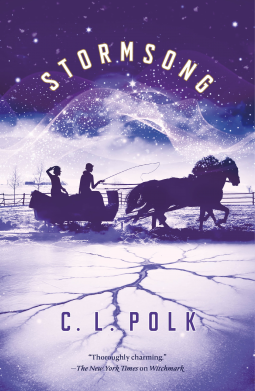Deborah J. Ross's Blog, page 46
October 1, 2020
Book Launch Day!!
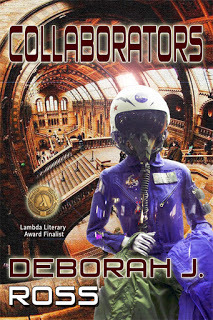 Book Launch today 10/1! #Collaborators is an occupation-and-resistance story, which at its heart is about the uses and abuses of power.
Book Launch today 10/1! #Collaborators is an occupation-and-resistance story, which at its heart is about the uses and abuses of power. Poised on the brink of war, the people of the planet Bandar are stunned by the arrival of a disabled Terran space ship. But the Terrans are even less prepared to understand the politics, gender fluidity, or mob reflexes of the natives. The Terran captain uses increasing force as the only way to ensure desperately needed repairs. Hoping to bring enlightened human values to the natives, a young scientist's intervention leads to disaster.
After a vicious assault, a pregnant native becomes radicalized. A failed poet sees the Terran occupation as a way to gain the recognition he craves. A widow whose farm is bombed using Terran weaponry journeys to the capital in search of help and ends up facing a firing squad. And a reporter becomes the voice of the resistance, determined to take back his world from the invaders...
As violence escalates, the fate of both peoples rests with those who have suffered the most. Can they find a way to forgiveness . . . and peace?
Lambda Literary Award Finalist
James Tiptree, Jr. Award 2014 Long List
B & N (ebook, trade paperback, and hardcover/laminated cover)
From your local bookstore, order via Ingram:
Trade paperback: 9781952589003
Hardcover/dust jacket: 9781952589027Kobo (and other ebook retailers)
Advance Praise for Collaborators
First-rate world-building from a writer gifted with soaring imagination and good old-fashioned Sense of Wonder. — C.J. Cherryh
A compelling tale of political intrigue, and well-meaning intentions creating disastrous tragedies. … and a romantic and intellectually sexy gender discussion wrapped up in a compelling novel. — J. M. Frey, Lambda Literary Award reviews
The alien biology and first-contact dynamics are handled unusually deftly; the narrative polyphony weaves complex melodies and harmonies. [The] world is effortlessly immersive and teems with fully realized characters. — Starship Reckless
Collaborators takes the familiar plot of "first contact" and makes something new of it. Its evocation of an alien species and culture is both fascinating and enlightening, and [Ross] uses that culture to draw parallels and contrasts to our own human behavior which are sobering and yet also hopeful. Do yourself a favor and read it! — Kate Elliott
Collaboratorstells a story that resonates deeply with our own history, yet at the same time evokes a culture and people unlike any on Earth. [It] is not only a rousing good story, it is also the kind of thoughtful fiction that offers new insights with each reading. — Catherine Asaro
The rendering of the planet is magical. The political drama is as real as anything that would happen here on Earth. I keep . . . remembering an exquisite moment of compassion or a gesture of kindness in the midst of violence and chaos. -- Nancy Wood, Western Friend
[Ross] gives us a lush world, compassionately populates it with real and complex beings, and shows her skill as a master craftswoman and storyteller. -- Gabrielle Harbowy

September 28, 2020
Wildfire Journey Part I
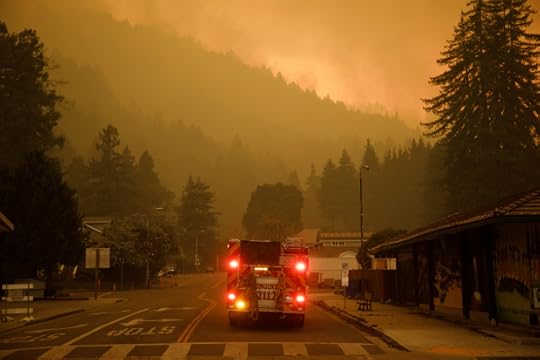
First came thunder and dry lightning. Such storms are rare in my area, due to the configuration of the mountains, but this one was extraordinary by any standards. The first storms hit early on August 16, with not dozens but thousands of lightning strikes (estimated 12,000 over 72-96 hours).
We had watched the lightning for a few hours, flash after blinding flash, and commented that in his last years, our old German Shepherd Dog had become fearful of loud sounds like thunder and fireworks (we dealt with this by immediately getting out his all-time favorite toy and playing with him). Even though we knew of the danger of fires, somehow it didn’t connect. It should have. Over 500 wildfires sprang up in the next few hours, fanned by hot, dry winds. Soon we saw news stories of multiple fires in our county, Santa Cruz, and neighboring San Mateo, that were to merge into the #CZUAugustLightningComplex fire.
The next day, the air was noticeably smokey, but we’d had smoky air before, from the Camp fire a couple of years ago, and others in Northern California. We kept an eye on the news but otherwise went about our business, mostly staying indoors. But as August 18 went on, the smoke thickened and the extent of the fire at Butano Park, northwest of us, expanded with terrifying rapidity, our mood went from watchful to alarmed. About dinner time, the smoke was as thick as San Francisco fog.
“We should prepare to get out of here,” I told my family. “Just in case.” For months now, I’d been gathering materials on disaster preparedness, and had checklists and evacuation route maps in a folder on the kitchen counter. Now I got out those lists.
We each went about packing up suitcases, getting cat carriers ready, piling up our binder of important documents and insurance policies, getting out boxes of family photos. CPAPs, check. Jewelry, check. Prescription meds, check. And so forth.
The smoke got worse. The fire got closer. Big Basin State Park, that jewel of old growth coastal redwoods, was in flames.
“We’re leaving,” I said, and called my dear friend and fellow writer in the East Bay.
“Of course you can stay with us,” she said.
“But first,” I told my family, “we will have a good dinner.” As I’d planned, fajitas with squash from our garden. The hot, flavorful food strengthened us for what was to come.
We finished dinner, I loaded the dishwasher and set it to run, and then we loaded up the cars, locked the house, and drove off. As it was, our grown daughter and the cats had an offer of refuge south of Santa Cruz, so after some discussion, we decided to split the family. We stepped out of the house into a sea of billowing smoke.
The road into our little town was already filling up with outbound traffic. At the one and only
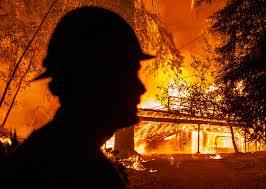
stop sign in town, in front of the volunteer fire department, sheriffs were directing traffic south toward Santa Cruz. “Go, go, go!” the officer in the middle of the intersection shouted, waving cars through. I’d planned on going left, then along a twisty mountain road I knew well to the nearest highway, but followed the course of least trouble for everyone. It meant a somewhat longer drive for me to detour south, then east, then back north, but in the interest of keeping outgoing traffic flowing smoothly and not making more work for the folks who were trying to get us all out safely, I took it.
Shortly thereafter, while I was on the road, we all received reverse-911 texts of the mandatory evacuation orders.
My friends had set up a tent for us in the back yard, which was the best impromptu solution to social distancing they could come up with. Gratefully we settled down to as much sleep as we could grab. The following morning, we had a discussion about forming a quarantine pod, taking into account our risk tolerance and exposure. We all felt comfortable with this, since it was already clear my family wouldn’t be going back home in a few days. The fires were already roaring down the coast and south along Highway 236 toward our neighborhood.
The next few days passed by in a blur of being obsessively glued to social media, watching the fire’s hourly progress, connecting online with neighbors, remembering all the things we forgot to pack (the power supply to my CPAP), envisioning all the things we didn’t or couldn’t take with us (piano, artwork, 5,000 volume library) burned to ashes, and so forth. The blaze crept closer and closer to our street. We all had difficulty sleeping and eating.
We’d see rumors that the fire crews had abandoned everything west of Highway 9 at our town, and that was where they’d draw the line. These proved to be just that — rumors — although the crews were stretched critically thin. It made horrific sense that they would throw all their meager resources into defending the town, for if that were lost the fire could go roaring south, consuming one small community after another toward the nearest small city. Neighbors rose to the occasion. Locals with fire-fighting experience set up a water station near our block, watchful for embers descending from the ridge. Neighbors formed a private Facebook DM group, exchanging snippets of real news. One was the spouse of a fire-fighter and was able to convey news. Another was a reporter who ventured behind the fire perimeter zone to check out houses.
Every night I went to sleep, expecting to find out the next morning that our house and garden and orchard were gone. And day by day, they were still there. And when I first saw the footage of our fence and carport, still intact in the swirling smoke, I burst into tears.
How our hosts put up with us, I don’t know. Despite their own problems, they were unfailingly kind, gracious, and welcoming. Between our friends and our neighbors, I got to see the best in human nature.
Then came predictions of another lightning storm, with more hot, dry winds. Fire fighters had begun to arrive from other parts of the state, from other states, and even from Australia (I learned later that this is a regular thing as our fire seasons are opposite). Inmate fire crews joined them (and since have gained the right to apply for formal fire fighter training.) The rugged terrain and heavy fuel loads combined with terrible heat to add to their burden.
We finally, finally got a break. The storm dissipated with no new lightning to spark more fires. The winds stilled. The heat wave broke. The smoke thinned enough to make air support (helicopters dumping loads of water) feasible. Our crews kept working at full pace, trying to make the most of the more favorable conditions. We even got a little rain, not enough to make any difference but enough to give us all hope. The containment went from 0% to 5 % and more.

After most of a week with our friends, we realized that we weren’t going home any time soon. I called our homeowners insurance to ask about temporary housing; because of the mandatory evacuation, this time fell under “prohibited use” and our adjuster asked where we’d like to be and what our requirements were. Unlike some others, who’d ended up in shelters or motels, we were able to say, “Three adults, four cats, separate bedrooms, one suite.” Where? the adjuster asked. I expected that all the nicer hotels near us would already be filled. My friend recommended a long-stay hotel only a few minutes drive from her place. People she’d known had stayed there and found it comfortable. Our temporary housing adjuster set us up in a suite that met our needs, plus hot “continental” breakfasts that hotels often offer now. Our daughter and the cats joined us, and we set about laying down newspaper under the litter boxes, placing scratching posts in strategic locations, and so forth. I was surprised at how quickly the cats adapted to their new surroundings, and also — although I shouldn’t have been — how much comfort they brought us.
Most of my hotel experience over the last few decades has been traveling to and from or at conventions. The glamor of staying in a new place, with those little bottles of shampoo and lotion in brands I’d never tried, not to mention eating in a restaurant, which I rarely do, had long since worn off. Now the place felt like a refuge, not just due to the relief from the smoke and having bedrooms with separate baths and a communal kitchen, dining, and living area, but because the staff soon got to know our story. True, they were doing their jobs in providing extra amenities (like detergent for the dishwasher or lending us the vacuum so we could clean around the litter boxes without having to get the cats back in their carriers) or just in passing. The wildfires touched everyone and in so many cases brought out the best in people.
September 25, 2020
Short Book Reviews: Of Badgers and Skunks and Friendship
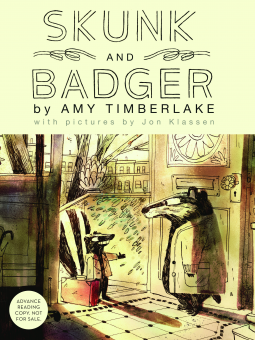
Skunk and Badger (Skunk and Badger 1), by Amy Timberlake (Algonquin Young Readers)
As I turned the pages of this utterly charming story, I couldn’t help think what a delight it would have been to read aloud with the whole family. The animal characters – Badger the Rock Scientists and Skunk the unwelcome guest – would surely have captivated my children (who as grown women are equally susceptible), and the combination of direct language and nuanced relationships would draw in any parent wrestling with how to convey important lessons.
The story is simple on the surface: Badger’s hermit existence comes to a crashing halt when his Aunt Lula, owner of the brownstone in which he lives, also invites Skunk to move in. Skunk is not only irreverent to the Science of Rocks and friend and patron to many chickens, but quickly makes himself at home, plying Badger with home-cooked breakfasts as he gently but persistently confronts Badger with his prejudices and white lies.
In the end, Badger takes a fresh look at how he has isolated himself, ignored the feelings of others, and done harm to a potential best friend. One of the most profound changes was Badger’s new-found ability to admit he was wrong and to apologize sincerely by changing his behavior. We could all learn from his example!
Verdict: A book to read aloud with the whole family.

September 21, 2020
Author Interview: Marella Sands Interviews Me

In a fun turnabout, author Marella Sands interviewed me on her blog about my forthcoming release, Collaborators. Here's our chat:
Marella Sands: What prompted you to write this book?
Deborah J. Ross: I lived the better part of 1991 in Lyons, France, and I was repeatedly struck by how history permeated every aspect. Some buildings showed damage from cannon balls during the French Revolution. Plaques marked places where citizens were executed by the Nazis or Jewish families were deported. After visiting the tiny Musée de la Résistance, I became interested in how many varied ways the French responded to the German occupation. Some protested from the very beginning for religious or ethical reasons, but others went along, whether from fear or apathy or entrenched anti-Semitism, or simply because the war did not affect them personally. Yet others more sought to exploit the situation for personal power or financial gain. Some became active only when their own personal lives were affected.
I knew then that I had to tell this story. Because I’m not a writer of history or historical fiction, but of science fiction and fantasy, I would tell it in the genre I know. I would set my tale on an alien planet, in an alien city . . . but one that I love even as I had come to love Lyons.
MS: How did you develop the motivations of the main characters?
DJR: The central inspiration for Collaborators – that individuals respond in a variety of complex and contradictory ways to a situation of occupation and resistance – immediately suggested many types of characters: the rebel, the idealist, the opportunist, the political player, the merchant willing to sell to anyone if the profit is high enough, sadist who exploits the powerlessness of others for his own gratification, the ambitious person who doesn’t care who his allies are, the negotiator, the peace-maker, the patriot.
One of the first characters to speak to me arose from an unexpected source. I never knew either of my paternal grandparents, for both had perished in the lawlessness and pogroms in the Ukraine shortly after the first World War. My father told me about how his mother ran a bookstore that was the center of intellectual (and revolutionary!) thought in their village, how when that village was destroyed, she kept her two children alive as they wandered the countryside for two years, going from one cousin’s house to another but never staying very long. He spoke of her courage, her idealism, and her unfailing love. Some piece of her, or her-as-remembered, stayed with me, and I wondered if I could create a character with that strength and devotion to her children. I began to write about Hayke, who opens the book as he lies in a field with his two children, gazing up at the stars and wondering what these star-people might be like. Hayke had other ideas about what his life was like besides merely following in my grandmother’s footsteps, and everything changed once it became clear to me that the alien race – the Bandari – were gender-fluid. Hayke, like my grandmother, was a widow (using the term generically to include both sexes), and one of his children was born of his own body, but the other of his dead spouse’s, and he told me he felt an especial tenderness for the latter child.
Even though the ground action takes place in an area roughly the size of Western Europe and most of the characters live or come from Chacarre, I didn’t want all the national territories to be the same. I wanted differences in language, dress, attitudes toward authority, etc., between Chacarre and its rival, Erlind, and also within Chacarre itself. Every once in a while, a new character would surprise me, like Na-chee-nal with his “barbarian” vigor and his smelly woolen vest, or Lexis, the dangerously repressed academic poet.
The Terrans presented a different challenge because they were more homogeneous than the Bandari. They inhabit a single spacecraft and although there is a natural division between crew and scientific personnel, for the most part their goals are shared and their hierarchies are well-defined. Left unchecked, that’s a recipe for boring, so I added some friction, a few divergent motives, a highly stressed environment . . . and into this walked Dr. Vera Eisenstein, eccentric genius. Most of the inspiration for her character came from the women engineers and physicists I’d gotten to know (thank you, Society of Women Engineers!) with a touch of Dr. Richard Feynmann thrown in. She doesn’t play by anyone’s rules, she cares far more about science than diplomacy, she’s simply too good at what she does to disregard, and her mind never stays still. I had a ball cooping her up in the infirmary and watching what kind of trouble she’d get into, but I didn’t realize at first that she would become a pivotal character, one capable of acting for the greatest good despite the depth of her loss. I’d been thinking about her passion in terms of science, not in terms of her capacity for love nor in terms of her ruthless commitment to understanding everything she sees around her, whether it is a problem in laser spectroscopy or alien psychology or the nature of her own grief.
MS: What is the best animal and why is it the cat?
DJR: The most amazing pet I’ve ever had was a retired seeing eye German Shepherd Dog. Tajji’s lineage had been bred (for 40+ years) for the kind of bonding, intelligence, and self-reliance necessary to do this difficult work. She’d served for 8 years, a long time for a guide dog, and her mental health had suffered. When we communicated to her that she was now free to sniff and romp and play, things she was never allowed to do in harness, and that we could “read” her body language and respond to her emotional needs, her joy was boundless. We had her for only 2 ½ years, but every day with this super-smart, human-focused dog was a gift.
MS: How does setting this story on another planet help or hinder you as a writer?
DJR: Collaborators is an occupation-and-resistance story, which at its heart is about the uses and abuses of power. In order to talk about power, I had to talk about gender. Rather than delve into 20th Century human gender politics (I wrote the book mostly in 1992-95) I chose to create a gender-fluid alien race to pit against the assumptions humans make. I wanted to create a resonance between the tensions arising from First Contact and those arising from gender expectations. What if the native race did not divide themselves into male and female? How would that work – biologically? romantically? socially? politically? How would it affect the division of labor? child-rearing? How many ways would Terrans misinterpret a race for whom every other age-appropriate person is a potential lover? Or, in a life-paired couple, each partner equally likely to engender or gestate a child? Maybe by the time we achieve interstellar space flight, we’ll have evolved beyond sexism. One can only hope.
MS: At what point in writing a book do you feel like you want to pack it all in? (I think there's an Orson Scott Card quote about how, at the 30K word point, he always wants to type "and then they all died.") Maybe this doesn't happen to you, but if it does, have you developed any habits that get you through it?
DJR: I don’t think that’s ever happened to me since I began writing novels on a pro level. Oh, back in the early ‘90s. I sell mostly on proposal now, so having to write a synopsis weeds out a lot of haring off after dead ends. I’ve learned to identify when I’ve gone astray (before having to revise a piece 5 or 12 times), which is the most likely source of frustration. Even with an outline, there is so much to discover. That uncovering of the deeper story is the source of so much delight. That’s more likely to happen as I get further into the story, and I always look forward to it.
MS: Electric or gas stove? Why?
DJR: I used to think gas, but after having survived the 2020 California wildfires, I’m not a big fan of flames. The newer electric ranges are just fine, thank you, even if I don’t entirely trust the smooth-topped kind.
MS: What was your first sale and how did that change things for you?
DJR: I’d submitted Jaydium to DAW about a year and a half before I lived in France (see above). When I returned, after having written every day and not seen clients at all, I took a leap in deciding to officially switch careers. The economy was in a recession and it was a very scary thing to do. Three months later, DAW made me an offer. The universe was telling me I’d made the right choice. Since then I’ve found myself in the position of needing a full time day job but have never stopped writing.
MS: What's the most important thing for people to understand about developing the skills needed to write a novel?
DJR: Be gentle with yourself. This is a marathon, not a sprint. It’s a feat of cognitive dexterity to hold 500 pages of plot, character, and theme in your head all at once, so find out whatever helps — a notebook, flow charts, diagrams, scene-by-scene outline (not a bad strategy for revision, by the way). Whether you write 5 pages or 5 words a day, be sure you write them well, and with heart.

September 18, 2020
Surviving Ruth

I just read that Supreme Court Justice Ruth Bader Ginsberg has died. Like many others, I went from shock to dismay to despair as I tried to grapple with the news. I felt as if I’d been punched in the gut. I felt as if the world I cared about — the world of justice and compassion and equality and diversity — were coming to an end. I saw my own emotions in the social media posts of friends.
Then I remembered something that has sustained me through dark times. We aren’t all crazy on the same day. We who are not crazy (or despondent or frantic, or so depressed we can barely breathe) on any given day will carry you, and then you can carry us.
I don’t in any way mean to imply that RBG’s death is not a terrible blow. Of course it is. And the consequences may unfold in dreadful ways. But for the moment, I ask you to imagine -- with me, us together -- her saying, “Don’t lose hope. Don’t give up. We are in this together and together we will get through this.”
So many times over the years, her words, her courage, and her clarity have carried us. Now it’s time for us to do that for one another. Let’s take the time to honor her, to respect the depth of our loss.
And then let’s be RGB to one another. Let's follow her example and persist. And resist. And be shining lights of hope.

Book Reviews: Polyamory Is a Great Place to Raise Kids
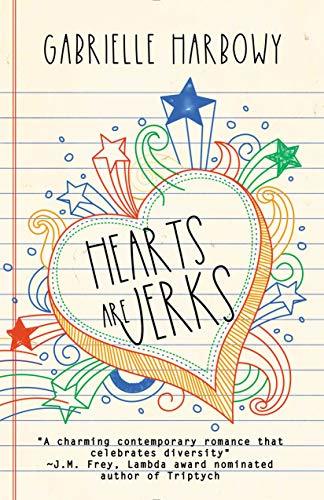
Hearts Are Jerks, by Gabrielle Harbowy (Heart Bow Books)
Back when gay marriage was being hotly debated in my state, opponents railed that the next thing, people would be able to marry more than one other person. My response, then and now, was “I don’t see why this is not a good thing.” It has always struck me that each loving relationship is unique, and the problems so often depicted in a negative way in films, television, and novels arise from poor communication and the expectation of jealousy. Characters all too often flirt with someone they’re not interested in, in order to arouse the possessive rage of their spouses. Dating more than one person is considered de facto “cheating.” Added to this pressure is the expectation that teens, who are at the beginning of their romantic lives, must find and stick with the “right” person without exploring other relationships. The truth is that all of us love more than one other person, although we typically place the different relationships in different categories: we love parents, children, siblings, kinfolk, friends, comrades...and romantic partners...at the same time. Many cultures have some form of polyamory, whether it’s marriage to more than one other person or socially acceptable lovers in addition to spouses. Human behavior and sexuality is so varied, why should we presume ours is the only right way? Or that one way is right for everyone?
I was delighted to discover Gabrielle Harbowy’s novel, which centers on a teenager who has grown up in a polyamorous family in which relationships are negotiated with kindness, skill, and clarity. Alicía Diaz considers it normal for both her parents to have other partners, and her life has been enriched by their loving support. When she begins to date both another girl and a boy, she always has someone who understands and can help her articulate the issues of consent, boundaries, privacy, and communication. Allie’s life takes a turn for the complicated when her girlfriend moves across the country and she briefly explores a relationship with the boy her girlfriend has been dating. To make matters worse, Allie inadvertently makes an enemy of a classmate, one who seeks payback through the rumor mill. Soon Allie finds herself the object of a vicious campaign of gossip, one that could have dangerous consequences.
As the author herself points out in the afterword, Allie’s family is privileged in many ways. Not only do her parents and their partners have stable, examined relationships and healthy ways of resolving conflict, but they are educated and financially secure. They are not vulnerable to blackmail or at risk of losing their jobs or homes. While these authorial choices exclude many poor families or those in occupations at risk should their polyamory be made public, the exclusion allows the story to focus on the core issues involved in creating, nourishing, and ultimately defending multiple loving relationships.
Harbowy’s prose is literate and flowing, her dialog and characterizations evocative. The voice of her teen narrator is spot on. Challenging material in the hands of a sympathetic, skilled story-teller make for a page-turning, satisfying read that captured my attention and held it to the very last words.
Allie herself reflects that “hearts are jerks,” meaning we cannot turn love on and off like a faucet. We often go to great, sometimes ridiculous lengths for those we love. Sometimes loving another person comes with unexpected, almost insurmountable challenges. Allie meets hers with courage and forthright honesty. We definitely need more stories like hers!
I should add that I read most of this book while my family and I were evacuated from the 2020 California wildfires, and I found the sanity and compassion of Allie and her partners and family incredibly reassuring. Hearts may be jerks, but the people we love most certainly are not.

September 7, 2020
Author Interview: James Alan Gardner
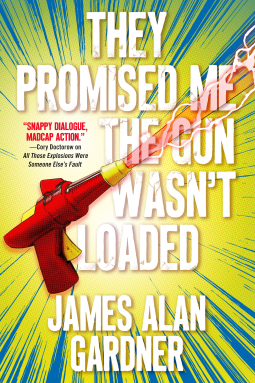 Today I chat with Canadian SF author James Alan Garner, whose wonderfully inventive and hilarious novels, All Those Explosions Were Someone Else's Fault (2017) and They Promised Me the Gun Wasn't Loaded (2018) I have previously reviewed here.
Today I chat with Canadian SF author James Alan Garner, whose wonderfully inventive and hilarious novels, All Those Explosions Were Someone Else's Fault (2017) and They Promised Me the Gun Wasn't Loaded (2018) I have previously reviewed here.Deborah J. Ross: Where did you get the idea for The Dark vs. The Spark series?
James Alan Gardner: I have always loved superheroes. I owned the first 8 Avengers comics, bought when they first came out, plus many other comics from the early 1960s. (Yes, I'm that old.) I kept on reading Marvel and DC down through the years, until the early 1980s when I began playing Champions, a table-top role-playing game. I've been role-playing ever since, pretty much once a week for 40 years (yikes!) Over that time, I've played many games (including of course a lot of Dungeons & Dragons) but the games that stand out most in my mind are Champions and the White Wolf "World of Darkness" games in which you could play vampires, werewolves, ghosts and other such "monsters".
I don't really know what brought superheroes and "monsters" together in my mind...but when the Occupy movement started in 2011, the idea of the 1% being monsters and the 99% being protected by superheroes seemed like a natural. From that point on, it was just a matter of figuring out who my superheroes would be and what kind of trouble they'd get into.
DJR: Tell us a little about your previous books.
JAG: Before the Dark vs. Spark books, I had a science fiction series that took place in what I called the League of Peoples universe. The idea was that the most powerful alien races in the galaxy had banded together to impose a single inescapable law on the galaxy: dangerous non-sentient creatures were not allowed to leave their home solar system. Dangerous non-sentient creatures included anyone or anything who was prepared to kill a sentient creature. So if a murderer or someone even willing to commit murder tried to leave their home system, they simply died: 100% infallibly. In terms of humans, peaceful people could safely go almost anywhere in the galaxy, but anyone who tried to leave Earth's solar system with any sort of deadly weapon just died, always always always. Earth therefore remained the home of people who refused to play nice, but anyone with kindly intentions had free run of the galaxy (along with all the other alien races that were similarly civilized).
It was a fun series. Some of the books took place on Earth among the dregs who'd stayed behind. Other books took place in various star systems; they mostly featured human Explorers getting into trouble. On the one hand, villains simply couldn't go interstellar; however, any particular planet might have homegrown threats...and of course, the Explorers couldn't carry lethal weapons themselves. I liked playing around with the possibilities.
DJR: Your bio says you're a kung fu artist who also teaches it to kids. I'd love to learn more (I studied kung fu san soo with Jimmy H. Woo in El Monte CA for 25 years and have found the art influencing my writing in expected and surprising ways.)
JAG: I've been training in Five-Animal Kung Fu for almost 27 years now...although the last few months have been difficult, thanks to our friend COVID-19. Learning Kung Fu has taught me a lot about hand-to-hand fighting, a little about weapons, and tons about discipline, focus, meditation, and all those good things. But it's also brought me into contact with a wide range of people, from five-year-olds up to seniors. Without Kung Fu, the only people I'd spend time with would all be much like me: book and/or gaming nerds. I really credit Kung Fu for saving me from being completely locked in a very small bubble. (And just for the record, our five animals are Tiger, Leopard, Snake, Crane, and Dragon.)
DJR: Does Canadian sf or sf set in Canada have a special flavor? What does it contribute to the larger international community that US-based sf lacks?
JAG: SF is very often about coming into contact with The Other, whether that means aliens in science fiction, or other races/cultures in fantasy. The U.S. only has two models for this: either war, or the melting pot. Either different peoples are incapable of getting along and end up trying to kill each other, or else they all assimilate into the same unified culture (as in Star Wars, where there are many species speaking many different languages, yet they're all essentially the same).
Canada has two other models to draw on: the Two Solitudes, and the salad bowl. Two Solitudes is a famous Canadian novel by Hugh MacLennan dealing with relations between French and English Canada; they co-exist by ignoring each other. (This was more true in the past than it is today, but even now, there's not much interaction, positive or negative, between the two cultures.) The salad bowl means multiculturalism, standing in contrast to the melting pot. In a salad bowl, different cultures retain their distinctive flavors and identities, but the whole is greater than its parts. Canada isn't unique in its belief in multiculturalism, but it's a central part of our consciousness. In Canadian SF, different cultures are much less likely to fight or assimilate than in American SF; different cultures can live together with each other while maintaining and benefiting from their differences.
DJR: Are there advantages or disadvantages of being a Canadian (or non-US author)? (I hear this from Australian sf authors.)
JAG: Obviously health care is a biggie. I've never had to pay a cent for a doctor or hospital; I show my (free) provincial health card, and that's it. So that's a huge worry and expense that I never have to worry about, as compared with US writers. It's meant that I've been able to work fewer hours every day at non-writing day jobs than I'd otherwise have to. I've never really noticed any disadvantages; for example, I've never got any pushback at all from US editors if and when I set stories in Canada. Once in a long time, I've had a Canadianism confuse a copy-editor, but that just means I have to change or explain it.
DJR: Care to comment on the role of fiction/storytelling/sf in today's pandemic world?
JAG: SF has done a lot with pandemics already; trying to do something new would take a lot of effort and almost certainly wouldn't be worth it. I strongly suspect that when the pandemic is over (if it's ever over), absolutely no one will want to read fiction about it. If anything, readers are likely to want fun upbeat escapism...which is good, because that's what I love writing!
James Alan Gardner is a Canadian science fiction author, winner of the Prix Aurora Award and the Theodore Sturgeon Award, with nominations for the Nebula, Hugo Awards, and more. You can find him at:
Web site: jamesalangardner.com
Twitter: @jamesagard
Patreon: https://www.patreon.com/user?u=269083

September 4, 2020
Very Short Book Reviews: The Magical Girl Gang and Other Joys
When We Were Magic, by Sarah Gailey (Simon and Schuster)
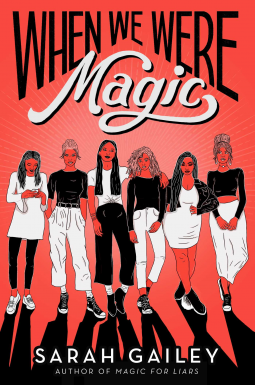
They’re classic girl buddies, pinky-sworn to support one another. One is the nurturer, another the innovator, yet another the nature lover. One (the narrator) has a secret crush on another girl. But they’re also magic, each with her own gift, and all determined to keep what they can do secret. So when Alexis, in order to make her secret crush jealous, allows herself to be seduced by the high school golden boy on prom night, her dishonesty with herself ignites her magic with disastrous – and lethal -- results. What to do with the body? Call her friends, of course! An ill-conceived plan to chop up his body and get rid of the separate pieces leads to ever more dire complications. Only by unveiling secrets and working together can Team Magic put the world right again.
Wonderful authorial voice, a freshly imagined system of magic, awesome girl friendships, and plot twists galore create a fast and absorbing reading experience.
Jack, by Connie Willis (Subterranean)
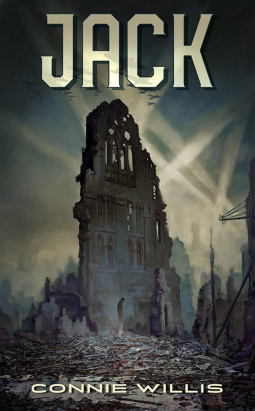
I think of this novella, set in London during the World War II blitz, as a companion piece to Connie Willis’s duology, Blackout and All Clear, and her “Fire Watch.” Whereas the two novels were time-travel science fiction, Jack falls into fantasy. Or rather, topples headlong into a seemingly ordinary world replete with Victorian gothic references. A few are obvious, like the character Renfrew, others more subtle. One of the joys of an ereader is the ability to look up names and references <g> When you think about it, it stands to reason that a chaotic, violent time like the London blitz might attract predators, now freer to hunt than in more sedate times – but to what end? To feed on death and pain, or to in small way atone for the evil they’ve done?
As usual, Willis is in fine style, weaving in hints through everyday happenings, in this case, an air raid rescue team spotting fires, digging out survivors, and so forth.
This novella was first published in 1991. I’m glad to see it and others, new and old, find audiences. Not so long ago, it was very difficult to sell a novella, but changing markets and technologies have reintroduced readers to the gifts of this length.
Stormsong, by C. L. Polk (Tor.com)
I loved C. L. Polk’s Witchmark, to which this is a direct sequel, and I heartily advise readers to read that book first. In this world, both politics and the magic upon which the society depends are in an unprecedented and precarious imbalance. At the end of the first book, a series of shattering events have left the realm of Aeland in an even more desperate situation. The supernatural dangerous-elf-like Amaranthines are basically investigating their crimes to decide whether to exterminate them, and the weather workers are in disarray just as the equivalent of the storm of the century bears down on them. This time, the viewpoint character is Dame Grace Hensley, the privileged, magically gifted sister of Miles, our hero from Witchmark. She has much to atone for in her role in enslaving her brother’s will in order to steal his magic, but she’s had her eyes opened to the brutality of her own society. Which, when you come to think about it, is as interesting a place to begin a story as any. Grace’s awakening is not complete, of course. As an unreliable narrator, she still has blind spots aplenty. She has yet to discern the depth of her aristocratic privilege or the lengths to which her enemies will go to keep their grip on power. There’s a sweet lesbian love story, intricate political scheming, and genuine character growth.
Sequels are always tough, especially when the first volume is as good as Witchmark. Stormsong, while standing on its own less well, deepens the story. The shift in POV from what was previously essentially an adversary – and who now has a great deal to atone for – gives depth not only to the principal characters but to the world itself.
Creeping Jenny (A Nyquist Mystery), by Jeff Noon (Angry Robot)
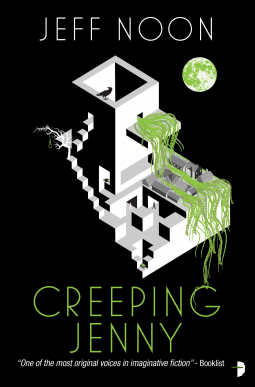
I was introduced to the work of Jeff Noon through his previous “Nyquist Mystery,” Man of Shadows, which takes place in Dayzone, a city under perpetual illumination. It goes without saying that without an imposed circadian rhythm and with the ability to sleep and wake on an individual schedule, the culture and psychology warp in bizarre and unexpected ways. I found the effect within the novel downright hallucinatory.
Creeping Jenny is no less weird, although it’s set in a small English village. John Nyquist has received a set of photographs, including one of his father, believed to be deceased. The story begins with his arrival in the village of Hoxley, in search of the truth – could his father be still alive, after all these years? Although the village is superficially quaint and quiet, it is no less weird than the city of Dayzone. For 300 days a year, the saint of that day rules over Hoxley, and a stranger set of saints I could not imagine. One day everyone stays indoors until dusk, another day everyone wears a mask and insists they are Edward or Alice, and on yet another, nothing ever gets completed – sentences, work, trying to get from one place to another. One villager names trees (and people), hanging tags on them, and gives Nyquist a mysterious name, Written in Blood. Two apparent suicides send Nyquist on the hunt for an explanation – were they in truth murders?
Noon has an almost supernatural ability to start off with an apparently mundane, real life situation and warp it in such unexpected directions that by the time you realize you are not in Kansas anymore, you’re not even on the same planet.
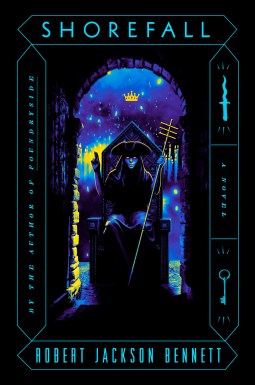 Shorefall, by Robert Jackson Bennett (Del Rey)
Shorefall, by Robert Jackson Bennett (Del Rey)This sequel to Foundryside is just as engrossing and dramatic. I loved the “industrial magic” of this world, as well as its central characters: scrappy Sancia with her ability to “speak” to scrived objects (enchanted by written spells); Gregor who hides both from his wealthy ruling family and his tormented past; Berenice with her extraordinary talents as a scriver and her love for Sancia; Orso who left a successful professional career working for a ruling family to help create a “people’s foundry;” and new ones as well. The very first scrivers, called hierophants, were able to remake time and space, and reality itself, and the original and most formidable of those, Crasedes Magnus, is bent on returning and re-making the world. His cause: bringing an end humankind’s propensity for turning every invention into a weapon by obliterating free will.
When is the price of peace too much? Can people ever learn to channel creativity and innovation into beneficial uses, or are they doomed always to turn to war and oppression? How do you counter an adversary capable of making you want to believe him?

August 31, 2020
#CZUAugustLightningComplex Fires -- My Neighborhood
Dear friends, This will give you an idea of the area I live in and why I love it so much. It was, for me, a joyous and healing place. The video does not show my street, but one very similar (and one I often walk along). There are a few shots of fire damage but most of that was to nearby areas. Enjoy!

August 28, 2020
Short Book Reviews: A Space Opera Gem from Elizabeth Bear
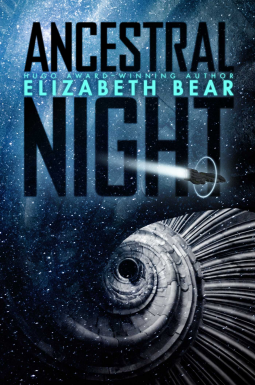 Ancestral Night, by Elizabeth Bear (Saga)
Ancestral Night, by Elizabeth Bear (Saga)This is a long, fascinating space opera in a far distant future in which humans manipulate their emotional moods and attitudes, AI shipbrains have dreams and social obligations, sentient squid-whales live in the vast interstellar spaces, and ancient alien technology holds the key to artificial gravity.
The story begins when Haimey Dz, engineer and scavenger of space wreckage, her pilot, Connla, and their shipbrain, Singer, act on a tip and come across an abandoned, repurposed space vessel (see above alien tech) that has been harvesting the corpse of a squid-whale (see above) to manufacture a costly and highly addictive drug. No sooner does Haimey realize (a) this is a moral outrage as well as a crime; (b) OMG there is artificial gravity here!; (c) she’s been infected with what looks like a glowing fungus-like parasite (see alien tech, above), but (d) aieee! The space pirates arrive to nab their prize.
One thing leads to another as the glowing fungus-like parasite grants Haimey the ability to sense, and eventually communicate with, said alien ships, and the charismatic and amoral female space pirate pushes Haimey to confront her own anguished past. Meanwhile, Haimey wrestled with her programmed adherence to mutual collective responsibility, teams up with a gigantic sentient mantis-like alien law enforcement officer from a low-gravity planet, Singer gets summoned to a term of civil duty, and the cats – did I mention the cats? There are two cats on their ship.
As I said, the book is long but filled with action and reflection that say as much about the different ways of looking at self vs society as they do about Haimey’s long-buried sense of self. It’s all fascinating, if a bit sedate in places, until the pieces start coming together. Then the parts I had previously found slow made brilliant sense and I couldn’t put the book down until the exciting and immensely satisfying conclusion. I say this as an advisory to other readers to hang in there: every piece is there for a reason, and it is richly worth the ride. Ancestral Night is in turns dramatic, thoughtful, humorous, hopeful, and tragic. From the government ship name, I’ll Explain It To You Slowlyto the weird and wonderful artificial mind that has wrapped itself around a dying sun, to everything I’ve mentioned above, the book is as much about how we balance individual choices with the greater good, all tied up with a big ribbon and two cats. Worth savoring, and re-reading.
The usual disclaimer: I received a review copy of this book, but no one bribed me to say anything in particular about it. Although, come to think of it, fine imported chocolates and roses might have been nice.


